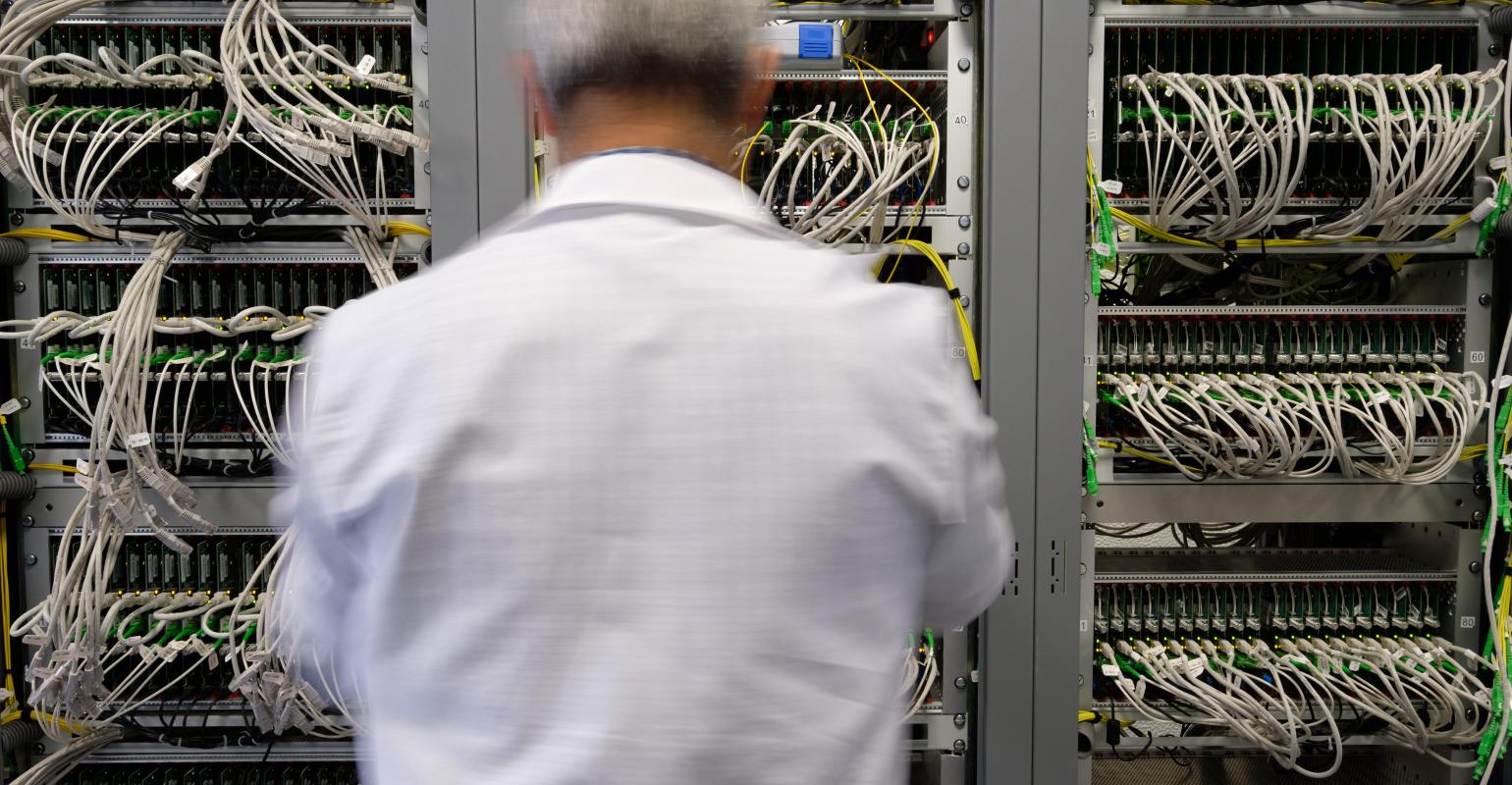Decoding the Black Box of AI – Scientists Uncover Unexpected Results

“If the GNNs do what they are expected to, they need to learn the interactions
between the compound and target protein and the predictions should be
determined by prioritizing specific interactions,” explains Prof. Bajorath.
According to the research team’s analyses, however, the six GNNs essentially
failed to do so. Most GNNs only learned a few protein-drug interactions and
mainly focused on the ligands. Bajorath: “To predict the binding strength of a
molecule to a target protein, the models mainly ‘remembered’ chemically
similar molecules that they encountered during training and their binding
data, regardless of the target protein. These learned chemical similarities
then essentially determined the predictions.” According to the scientists,
this is largely reminiscent of the “Clever Hans effect”. This effect refers to
a horse that could apparently count. How often Hans tapped his hoof was
supposed to indicate the result of a calculation. As it turned out later,
however, the horse was not able to calculate at all, but deduced expected
results from nuances in the facial expressions and gestures of his
companion.
Why 2024 is the year for IT managers to revamp their green IT plans

Conversations with enterprise operators reveal that many do not consolidate
applications when they refresh their IT equipment and are hesitant to deploy
power-aware workload management tools out of concern for impacting the
reliability of their IT operations. IT managers must guide their organisations
to intelligently utilise their available equipment capacity, using software
tools to measure, manage, and maximise utilisation within reliability
constraints. All organizations should set equipment utilisation goals and
build multi-year efficiency project plans to improve IT infrastructure energy
performance. Data available from IT equipment manufacturers indicate that
workloads on two to eight old servers can be migrated to one new server when
deploying n+1 (e.g., Intel or AMD CPU generation 3 to 4) or n+2 (e.g., Intel
or AMD CPU generation 2 to 4) technology. Similar improvements can be achieved
in storage and network equipment. Consolidating CPU workload and storage and
network operations delivers a defined workload on three-quarters to one-half
of the equipment.
AI Everywhere, All the Time: Top Developments of 2023

AI-powered robots are increasingly automating tasks in manufacturing and
logistics, among other industries, driving efficiency and changing the nature
of work. Some major milestones include Tesla's Optimus Bot prototype
demonstrating dexterous and adaptable humanoid robots, which could shape
future automation solutions. Separately, Boston Dynamics' Atlas showcased its
parkour skills, paving the way for applications in search and rescue or
disaster response. The AlphaFold 2 AI system, developed by Alphabet subsidiary
DeepMind, can perform predictions of protein structure, and stands to
revolutionize drug discovery and personalized medicine, carrying the potential
for helping mitigate numerous diseases. Robotic surgery systems grow ever more
sophisticated, while AI-powered prosthetics offer amputees greater control and
functionality. AI algorithms are already assisting doctors in medical
diagnosis for diseases such as cancer, offering increased accuracy and early
detection possibilities.
How Gamification Can Help Your Business

At work, gamification is often used to build employee experience by promoting
fun competition and immersive learning experiences, leading to better
information retention and a heightened incentive to engage in ongoing learning
and upskilling, Ringman says. Gamification is frequently used to boost staff
productivity. “In any business, there are many things that need to be done
every day that many of us aren’t naturally motivated to do,” Avila observes.
Gamification, provides helpful context, guidance, and rewards, allowing tasks
to be completed faster and more efficiently while improving focus. “This, in
turn, helps the company achieve larger business goals.” Brands can also tap
into gamification as they strive to engage customers and transform ordinary
interactions into memorable experiences. Ringman notes that brands can use
gamification to add extra fun to loyalty programs by hosting contests and
competitions, as well as awarding virtual badges and trophies to customers as
they complete various actions or pass significant milestones.
Envisioning a great future – India as a SuperPower

A nation’s growth is underpinned with technological advancement and how
swiftly it adopts tech. During the recent state visit of India’s Prime
Minister, Narendra Modiji to the United States, he put a lot of emphasis on
growing technology that will revolutionize various industries. India is fast
moving towards digitization. The thrust from the Government of India with the
Digital India initiative and the growing use of digital technology such as
Artificial Intelligence, Machine Learning and Data Analytics across various
private organisations is bringing a phenomenal shift in India’s growth and
development. Secondly, there is going be a lot of disruption in the way we
work. With AI, lots of work will be done by BOTS, so it is important to have
highly skilled labor to manage the AI which will also require upscaling the
work, as we will have more leisure. The way society works will change and need
to be adaptable. AI tools can be used as an Add-on tool to enable our lawyers,
CAs, economists and leaders at large. Today, India is a force to be reckoned
with in the domain of Information Technology without an iota of doubt.
Wi-Fi 7’s mission-critical role in enterprise, industrial networking
Wi-Fi 7 devices can use multi-link operation (MLO) in the 2.4 GHz, 5 GHz, and
6 GHz bands to increase throughput by aggregating multiple links or to quickly
move critical applications to the optimal band using seamless switching
between links. Fast link switching allows Wi-Fi 7 devices to avoid
interference and access Wi-Fi channels without delaying critical traffic. This
and other new features also make Wi-Fi 7 ideal for immersive XR/AR/VR, online
gaming and other consumer applications that require high throughput, low
latency, minimal jitter, and high reliability. ... Naturally there are
challenges with achieving seamless connectivity between 5G & Wi-Fi. A lot
of industry alignment is needed to enable frictionless movement between
networks, across technologies, vendors, and areas such as authentication, QoS,
QoE and security. The Wireless Broadband Alliance is playing a key role in
bringing all the stakeholders (operators, enterprises and network owners)
together to ensure collaboration and alignment on the frameworks that will
deliver seamless connectivity.
Data Center Governance Trends to Watch in 2024

Historically, data center governance did not drive frequent conversations in
the data center industry. Data center operators sometimes talked about it, but
it has not tended to be a core area of concern – perhaps because, unlike other
types of governance, data center governance isn't a requirement for businesses
seeking to meet regulatory rules or avoid compliance fines. Looking ahead,
however, governance in data centers is likely to become a more common item of
discussion. Data centers have now matured to the point that businesses are
increasingly keen to squeeze as much efficiency as possible out of them. In
the past, disorganized data center assets or lack of optimal server room
layouts may not have been critical. But today, data center operators face
growing pressure to maximize the efficiency of their facilities. Certain
regulators are now requiring disclosures about data center emissions, for
example, meaning that increasing energy efficiency through effective
governance practice has become important for protecting business's brands and
reputations.
Essential skills for today’s threat analysts

Very often, for instance, there's an urgent need to communicate a new
vulnerability to different audiences, which demands tailored communications
for technical teams, CISOs, and board members. Williams highlights task
management and patience, especially when dealing with uncertain or misleading
information, and above all, coordinating between different sources of
information. "So much of threat hunting today relates to that living off the
land kind of thing where you're seeing things that look malicious. And so
oftentimes you’re developing hypotheses and that involves consulting system
admin and working toward a resolution," says Williams. ... It's also a mind
game, with threat hunters needing to be highly adaptable as threats are
changing daily, sometimes hourly. "You need to change with them. Never allow
an inflexible mind to pervade your operational approach," says Brian Hussey,
VP of threat hunting, intelligence and DFIR at SentinelOne. At the same time,
you also need to see the forest through the trees. "Often threat actors
introduce surface changes to their attack patterns, but core modus operandi
remains unchanged, leaving important opportunities to identify and eliminate
new attacks, even before they arrive," Hussey tells CSO.
Want to tackle technical debt? Sell it as business risk

There is no magic potion that can eliminate all technical debt, but technical
debt can be attacked via budgeting if technical debt is not just perceived as
upgrading IT infrastructure. What CIOs need to do instead is to present IT
infrastructure investment as an important corporate financial and risk
management issue that the business can’t afford to ignore. ... Technical
budget justifications for IT infrastructure upgrades, which are seldom linked
to end business strategies, make it easy for budget decision-makers to defer
IT infrastructure investment. Instead, budget decision-makers figure that the
company can “make do” because IT will somehow find a way to keep systems
running. CIOs must change this thinking. They can start the process by
changing IT infrastructure investment justifications from technical
explanations to corporate financial and risk management explanations. ... CIOs
should also team with the CFO to help reframe the tech debt narrative, because
CFOs are always on the lookout for new corporate financial and risk management
scenarios.
Leveraging Leadership: The Fourfold Path to Business Control
Belief systems function as a mechanism for communicating the core values,
objectives, and mission of the organization, thus providing guidance and
motivation to staff members. By encouraging people to improve their customer
service through the inculcation of positive values, conduct, performance, and
a feeling of inclusion, this lever ensures the fulfillment of the
organization's objectives. In the absence of a clearly-defined Belief System,
employees are forced to depend on conjecture regarding the organization's
intended behaviors and objectives. ... Without stifling individuals' capacity
for innovation or entrepreneurship, this control mechanism permits the
development of policies and standards that instruct individuals on bad
behavior. Boundary systems implement regulations, codes of conduct, and
premeditated strategic boundaries to delineate acceptable and abhorrent
employee conduct, thereby establishing governing parameters. These boundaries
clearly define the irreversible consequences of violating ethical principles
and the potential outcomes that should be avoided.
Quote for the day:
"It is better to fail in originality
than to succeed in imitation." -- Herman Melville
No comments:
Post a Comment